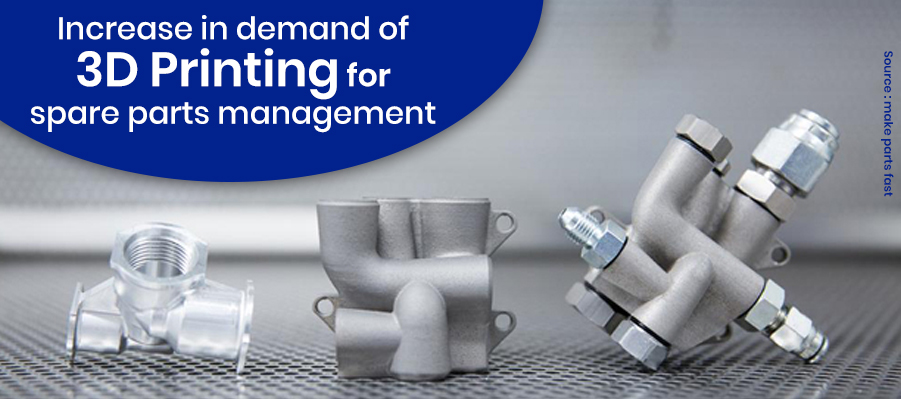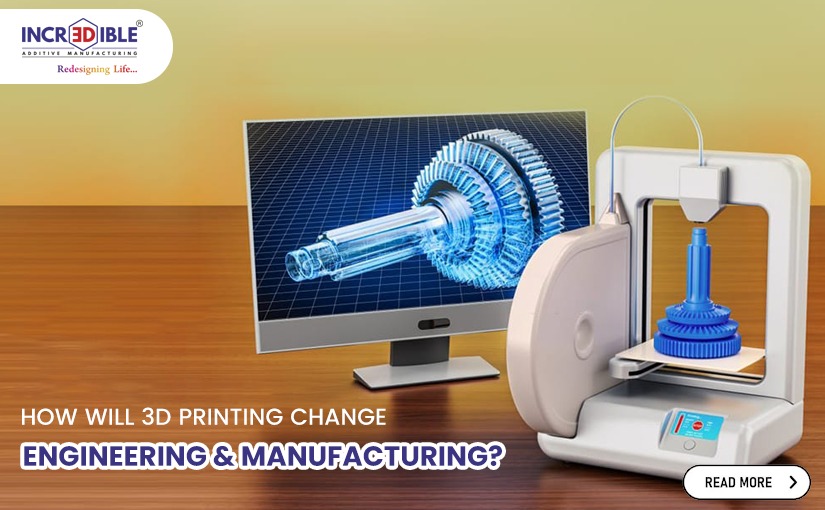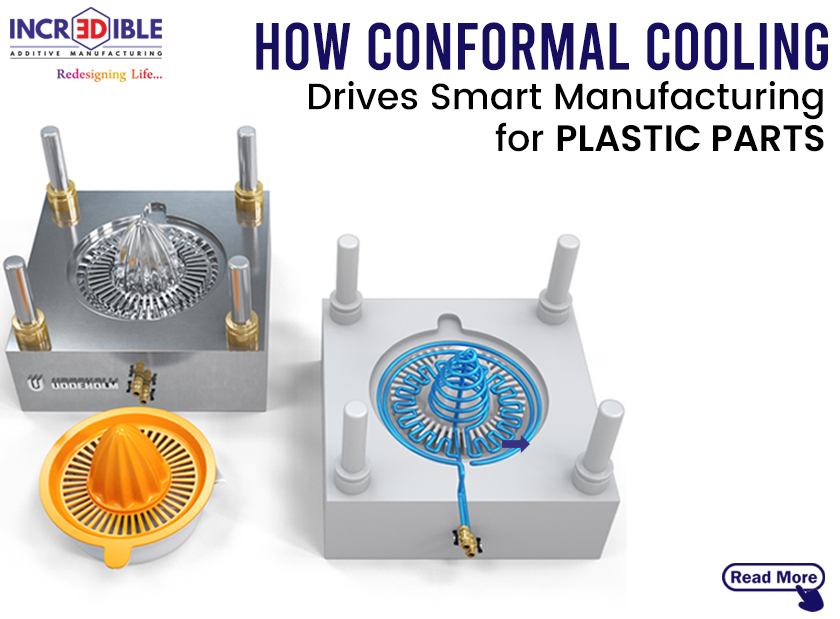The ultimate purpose of spare parts management is to create a balance between spare parts production costs, lead times, and the volume of parts that must be kept in stock. 3D printing is one technology that can assist both manufacturers and suppliers achieve this goal.
3D printing, as a digital manufacturing technique, allows some spare parts to be held in a virtual inventory and manufactured as needed, lowering storage costs and increasing service. 3D printing is also more cost-effective for low-volume production because it has fewer fixed expenses than previous methods.
It’s no wonder, however, that 33% of organizations polled by EY feel 3D printing of spare parts allows for a more efficient after-sales market, with another 26% believing the technology may cut logistics efforts and stocks.
Today, we’ll look at some of the primary advantages of 3D printing for spare parts, as well as some of the most fascinating examples of the technology in action and some pointers on how to get started with 3D printing for spare parts in your company.
Challenges in Spare Parts Management
Manufacturers of spare components are currently confronted with several issues.
•One such concern is the cost of ordering spare components. In traditional manufacturing, the majority of items are mass-produced in large quantities.
•Fixed costs, such as tool production and setup costs, can be amortized through volume manufacturing. Spare parts, on the other hand, are frequently made in considerably lower quantities, which implies that the total cost of such parts will rise.
•Long lead times are another concern with traditional spare component production. Finding the correct spare part and then shipping it to a client on the other side of the world can take weeks, lowering customer satisfaction.
•In rare circumstances, manufacturers choose to discontinue producing certain spare parts entirely, leaving their consumers without a solution.
•Furthermore, businesses frequently struggle to determine how much inventory they should keep on hand. Maintaining fully stocked warehouses is costly in and of itself, but it becomes even more so when there is excess inventory.
•Many of these challenges, however, can now be successfully handled thanks to the introduction of 3D printing.
What role does 3D printing play in the spare parts industry?
1.Low-cost, low-volume manufacturing
In comparison to traditional manufacturing processes such as injection molding and vacuum shaping, 3D printing has reduced fixed production costs. Because the 3D printing process is highly automated, it does not necessitate costly tooling and has a reduced cost of setting up a piece of production equipment.
When producing lesser numbers of items, 3D printing has a cost-benefit due to lower fixed expenses.
2.3D printing items on demand from a digital inventory
When it comes to spare parts, organizations must strike a balance between the cost of keeping a large inventory of spare parts and the capacity to meet consumer demand on time.
OEMs may rethink how they store parts thanks to 3D printing, making the transition to digital inventory easier. The main reason for this is that 3D printing allows you to create parts directly from a digital design file, eliminating the need for equipment such as molds.
3.Reduced lead times
Due to the requirement to develop and manufacture a tool as well as set up a production line, traditional manufacturing processes sometimes have months-long lead times. 3D printing allows for substantially faster turnaround times.
A compact aluminum bracket may be manufactured in a matter of days utilizing DMLS technology, as opposed to at least 12 weeks using extrusion and metal bending procedures.
Conclusion:
Metal 3D printing (Additive Manufacturing) is a novel manufacturing technology that has the potential to revolutionize how metal parts are created. Very intricate and detailed shapes can be made without dies and tooling. Incredible AM collaborates with a vast team of highly qualified and experienced leaders, engineers, and doctors to bring the idea to life. Our state-of-the-art facility has all of the necessary amenities to give the finest possible solutions to industries at the lowest possible cost, with the greatest possible quality, and the shortest possible lead time.
3D Incredible AM Pvt. Ltd. has received ISO 13485:2016 certification!
When only a few outdated parts need to be replaced and no spares are available, reverse engineering and 3D printing are the ideal solutions.
Suppliers and manufacturers can considerably improve their flexibility and business agility by implementing this process.




